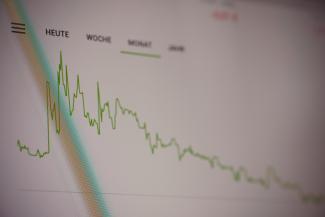
Understanding the Market Decline
A week is a long time if you’re a quick-twitch trader or market pundit. Early last week, the Smart Money (which is never as smart as it thinks it is) was assuring all of us that we were in a ‘goldilocks’ economy that had executed a ‘soft landing’—which means avoiding a recession after a period of strong growth. The Fed, we were told, was going to lower interest rates, and, well, everything was (this is not a technical economic term) ‘hunky dory.’
Then somebody must have panicked and spooked Wall Street traders into a selloff, taking the S&P 500 down more than 3% in a single day last week. That happened again on Monday, as once again the markets went into a mild panic and dropped 2.99% (S&P 500) or 2.60% (Dow). This is not the 8% daily drops after the pandemic, but it’s pretty clear that some buyers and sellers of stocks are getting fearful that the Smart Money’s prognosis may not have been entirely correct.
You can look in vain for whatever it was that spooked the markets. The news outlets tell us that the U.S. economy added ‘just’ 114,000 new jobs last month, which was fewer than expected. That caused investors in Japan (the Nikkei was down 12% for the day) and the Eurozone (down 2-6 percent depending on the country) to sell some of their stock holdings. When the herd startles, it tends to move in unison—which is to say U.S. investors saw what was going on elsewhere in the world and apparently decided to join in the selloff.
Other than the payroll reports, there isn’t really any data showing that the American economy is more likely to enter a recession today than it was last week or the week before. Adding new jobs (even if fewer than anticipated) does not sound like a recessionary trend, and corporate earnings and profits have generally been strong.
So is the current selloff totally irrational? Some have suggested that, deep behind the scenes, the yen ‘carry trade’ had something to do with the market movements. The carry trade is where global investors borrow yen at low interest rates, and then turn around and use the proceeds to buy stocks or bonds that offer more upside—like U.S. stocks and bonds. The Bank of Japan raised interest rates last week, reducing the interest rate differential between Japan and the U.S. Unwinding those trades means selling stocks and bonds out of very large hedge fund portfolios, which might be where the panic originated.
So is it time to panic? When things go on sale, that represents an opportunity, and stocks going on sale will eventually, when the dust clears, be seen as another chance to either lock in losses or buy at a discount. The choice is ours, and chances are the Smart Money has already made the wrong one.
As always, we are happy to discuss this wobble in the market or any other news items that have you worried. Please don’t hesitate to call or schedule a meeting.

